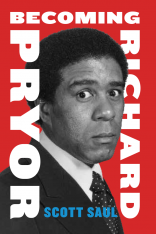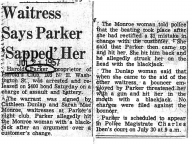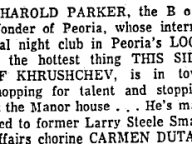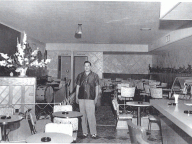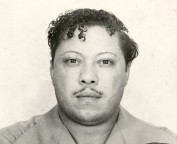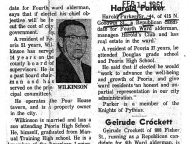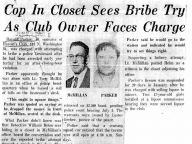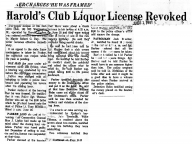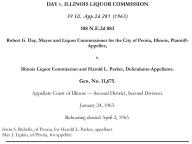Harold’s Club
Harold’s Club, the first venue where Richard Pryor found work as a paid entertainer, was a club like no other in the Midwest.
Run by Harold Parker, an old family friend and North Washington Street neighbor, the club carried the imprint of Parker’s high style and forceful personality. Its clientele ran the full gamut of society. Black and white, gay and straight, young and old all brushed shoulders there; crossdressers mingled with businessmen in suits. Somehow order prevailed: whereas brawls broke out regularly at Collins Corner and The Famous Door, Harold’s Club maintained an air of controlled experimentation.
To a Peoria patron of the early 1960s, an evening at Harold’s promised a classy “package entertainment” from 9 p.m. all the way to 4 a.m. The interior of the club was elegance itself, from the diamond-patterned parquet floor to the sprays of flowers that sat atop the piano. Chorus girls strutted through choreographed routines and went through a series of costume changes over the course of the evening. Musicians suited up, in matching tuxedos, to perform. Jazz combos, R&B acts like blues legend Little Walter, and rock and rollers like Fred Tieken and “Wild Child” Gibson all graced its bandstand.
The club’s heyday didn’t last long. Newspaper articles and legal documents chronicle the demise of Harold’s Club under increasing pressure from city government. It had been one of the few North Washington nightspots to survive urban renewal, and Mayor Robert G. Day worked hard to shut the place down. Soon after Harold Parker lost his liquor license for “operating his tavern after the closing hour,” his “4 a.m. club” was no more.
Tweet“[W]hen Harold came up to me backstage, I still had sweat pouring off me. 'You've got more nerve than anybody I've ever seen,' he said. 'Would you like to keep coming?'”
— Richard Pryor, on his debut as a performer at Harold's Club
